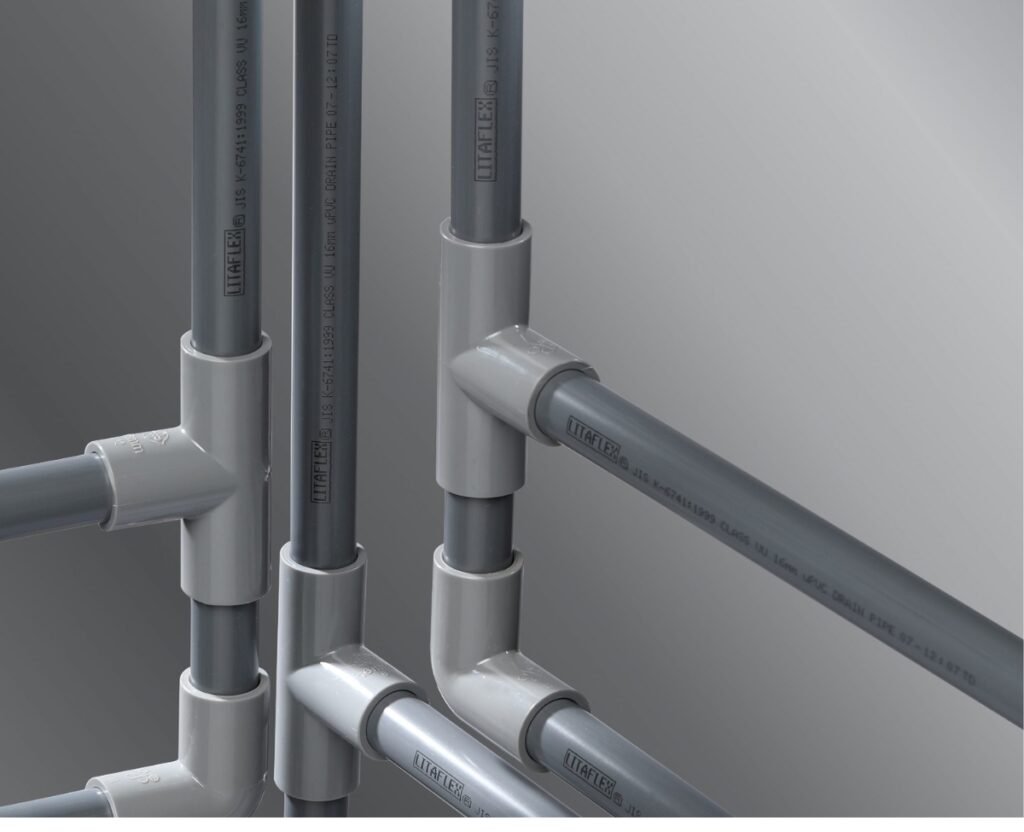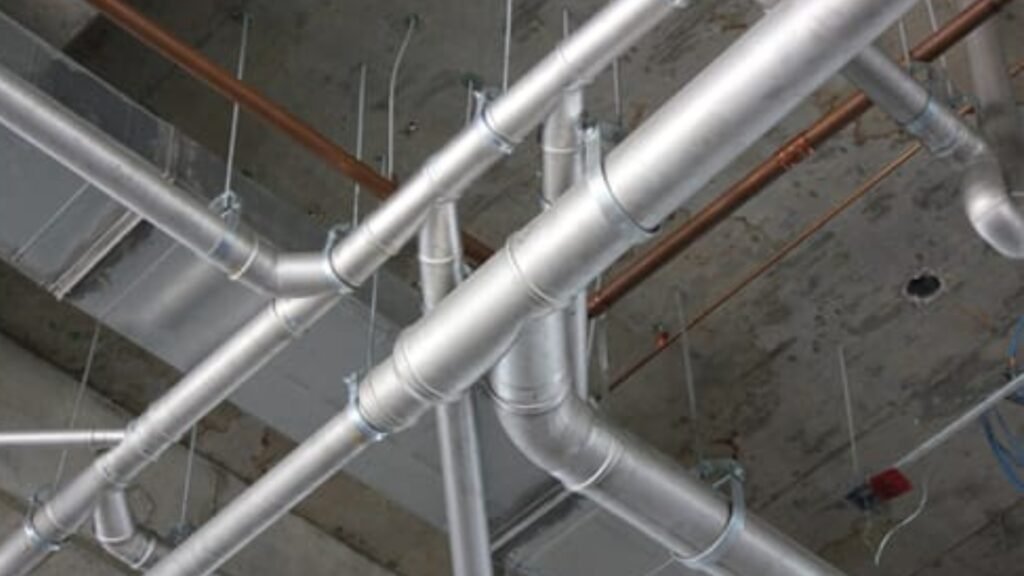A top-performing HVAC system depends on safe, reliable condensate drainage. The right PVC pipes for condensate drains ensure your system stays dry, efficient, and free from damage. Are you installing or upgrading a condensate drain? Understanding how to select the best PVC pipe can save money, prevent leaks, and extend system life. This guide breaks down key factors—like size, material grade, and safety features—so you can confidently pick the right pipe for your needs. Discover expert tips, practical recommendations, and what makes PVC the leading choice for condensate drainage in modern buildings.
PVC (Polyvinyl Chloride) pipes are a favored choice for condensate drains thanks to their affordability, durability, and resistance to environmental factors. This article explores the advantages, installation requirements, and best practices for using PVC pipes in condensate drain systems.
Why PVC Pipes Are Ideal for Condensate Drains
PVC pipes enjoy widespread use in HVAC systems for condensate drainage. Their unique properties make them a preferred material over traditional options like copper or galvanized steel.
Corrosion Resistance
One of the standout characteristics of PVC is its resistance to rust and corrosion. Because condensate drainage involves constant exposure to moisture, metals degrade quickly.
Cost-Effectiveness
PVC pipes cost significantly less than their metal counterparts. For projects with tight budgets, they provide a durable and economical solution without compromising functionality.
Lightweight Nature
PVC’s lightweight construction simplifies transportation and installation. Additionally, less labor is required, reducing overhead costs for contractors or homeowners.
Smooth Interior Surface
PVC pipes feature a smooth interior, minimizing friction during water flow. This quality prevents debris build-up, reducing risk of clogs in condensate drainage systems.
Versatility
PVC pipes are available in different sizes and grades, ensuring compatibility with a wide range of HVAC systems. Contractors can choose from Schedule 40 or Schedule 80 pipes depending on the pressure, durability, and temperature requirements of the application.
Non-Toxic and Safe
PVC components are non-toxic and meet industry safety standards. They do not leach harmful chemicals into the environment, making them an eco-conscious choice.

Key Installation Requirements for PVC Condensate Drains
Proper installation of PVC pipes ensures their efficiency in condensate drainage. Following best practices minimizes risks of leaks, clogs, or pipe failures.
Ensuring Proper Slope
For effective drainage, condensate lines must maintain a downward slope of at least 1/4 inch per foot. This gradient leverages gravity to move accumulated water through the pipe without stagnation.
Installing a Trap
P-traps are essential for condensate drainage. They prevent sewer gases, insects, and other contaminants from entering the HVAC unit. Without a trap, airflow into the drain line can also disrupt proper water flow, causing backups.
Adding Air Gaps
Air gaps are vertical separations that prevent backflow into the HVAC system. They ensure contaminants from connected plumbing systems do not flow backward, maintaining operational and environmental safety.
Selecting the Correct Pipe Size
PVC condensate pipes must meet specific diameter requirements to handle the expected condensate volume. Most residential applications require a minimum diameter of 3/4 inch.
Insulating the Pipes
Insulating condensate lines not only prevents moisture damage but also counters inefficiencies caused by dripping water.
Supporting the Pipes
Improperly supported PVC pipes tend to sag over time, creating secondary traps that block drainage.
Freeze Prevention for Outdoor Applications
Condensate drains located in unheated areas, such as rooftops or attics, are exposed to freezing conditions. Using soil heating cables or insulated piping can prevent freeze-ups, ensuring uninterrupted drainage.
Best Practices for PVC Pipe Installation
Failure to adhere to these guidelines may result in failures or unexpected costs.
Avoid Reducing Fittings
Never use reducing fittings in a drain trap or run-out line. A reduction in pipe diameter restricts water flow, leading to pressure build-ups and potential blockages.
Use Solvent Welding for Durable Seals
PVC components are joined using solvent welding. Allow sufficient curing time for the adhesive to set before operating the HVAC system.
Maintain Compliance With Local Codes
Some regions impose strict regulations regarding the use of PVC pipes. For instance, rooftop installations may require fire-resistant pipes due to the risk of toxic fume emission during fires. Always consult local building codes to remain compliant.
Install Condensate Pumps if Gravity Drainage Isn’t Possible
Gravity-based drainage isn’t always feasible in below-ground or multi-level installations. A condensate pump allows accumulated water to be pushed to the desired outlet safely and effectively.
Schedule Regular Maintenance
Condensate lines must be inspected and maintained regularly. Schedule periodic cleaning to clear algae, debris, and mold that can accumulate inside the pipes over time.
Common Challenges When Using PVC
Although PVC is a versatile material, it presents some challenges. Knowing these challenges enables proactive solutions, maximizing the material’s potential.
1. Temperature Limitations
PVC pipes can warp or weaken when exposed to high temperatures. Applications with extreme heat often use chlorinated polyvinyl chloride (CPVC) as an alternative.
2. UV Degradation
Prolonged exposure to sunlight causes PVC pipes to degrade, turning brittle over time. Use UV-resistant coatings or install shading to protect exposed pipes in outdoor settings.
3. Potential Noise Issues
PVC pipes can transmit vibrations and noise in HVAC systems, particularly in areas with thin walls. Soundproof wraps or barriers can help reduce acoustic disturbances.
4. Installation Errors
Improper connections or slope miscalculations are common installation errors. These issues lead to poor water movement and system inefficiencies. Hiring skilled HVAC professionals ensures proper execution.
Advantages Over Alternative Materials
Comparing PVC to other commonly used materials in condensate drainage underscores its advantages.
Copper
Copper is durable but prone to corrosion when exposed to condensate moisture. It’s also significantly costlier than PVC.
PEX
PEX provides flexibility and ease of installation. However, its susceptibility to UV rays and higher costs make it less favorable for external applications.
Galvanized Steel
Galvanized steel is sturdy but prone to rust over time. PVC’s rust-resistant properties make it a better long-term choice for consistent water flow.
Future Trends in PVC Usage for HVAC Systems
Advancements continue to improve PVC’s role in HVAC applications. Smart sensors integrated with condensate lines offer real-time monitoring, alerting users of clogs or leaks before they worsen.
What Makes PVC the Right Choice for Your System?
PVC strikes an exceptional balance between reliability, affordability, and functionality for condensate drains. With proper installation and adherence to industry guidelines, it delivers excellent performance and cost savings for both residential and commercial applications.
Conclusion
Choosing the right material for PVC Pipes for condensate drains goes beyond cost and installation compatibility. Each decision impacts system efficiency, longevity, and environmental sustainability. PVC pipes deliver unmatched reliability when combined with thoughtful planning and professional expertise. Their durability and corrosion resistance make them not only a practical solution but also a forward-thinking investment in HVAC management.
Optimize your systems with PVC piping to secure years of seamless and efficient condensate drainage.

